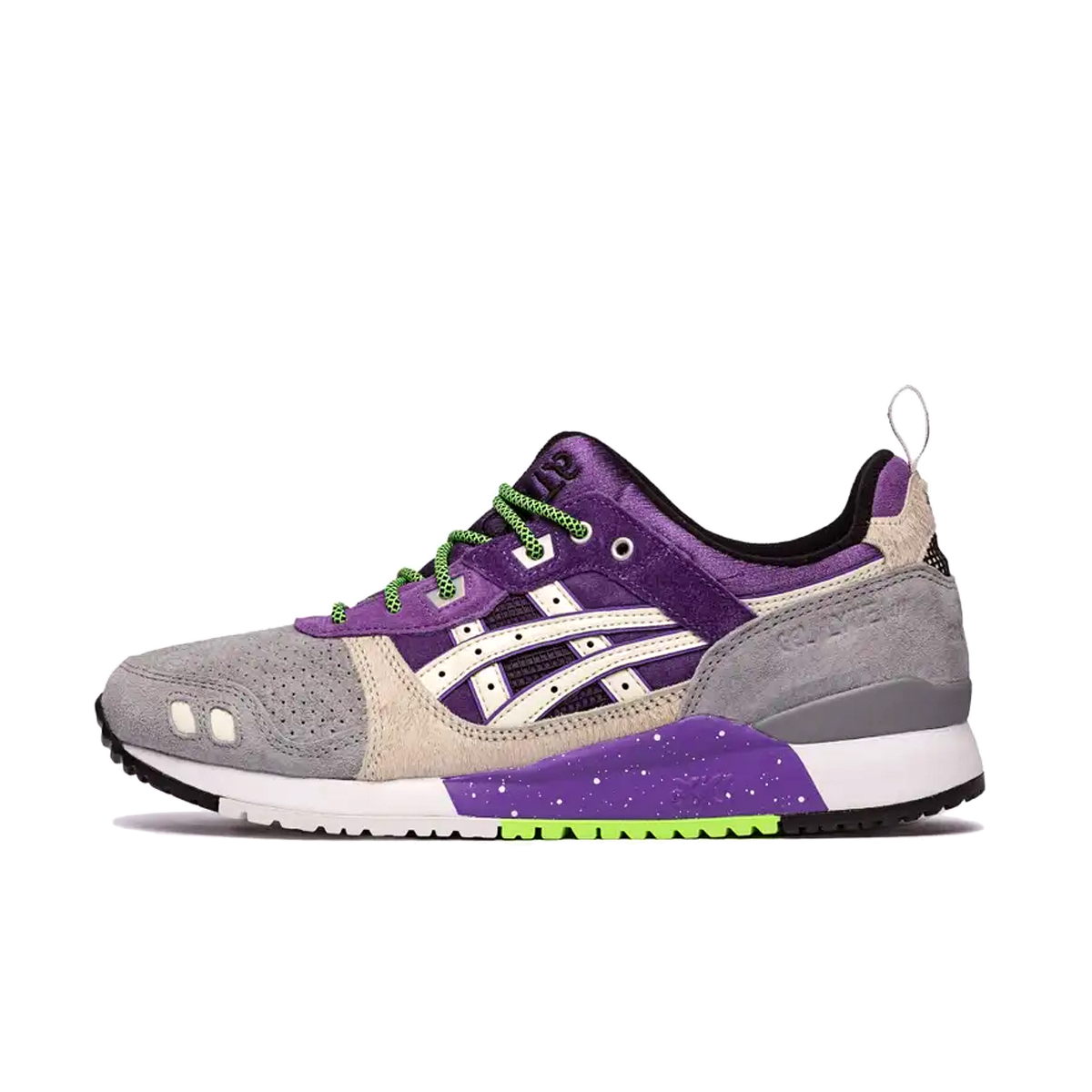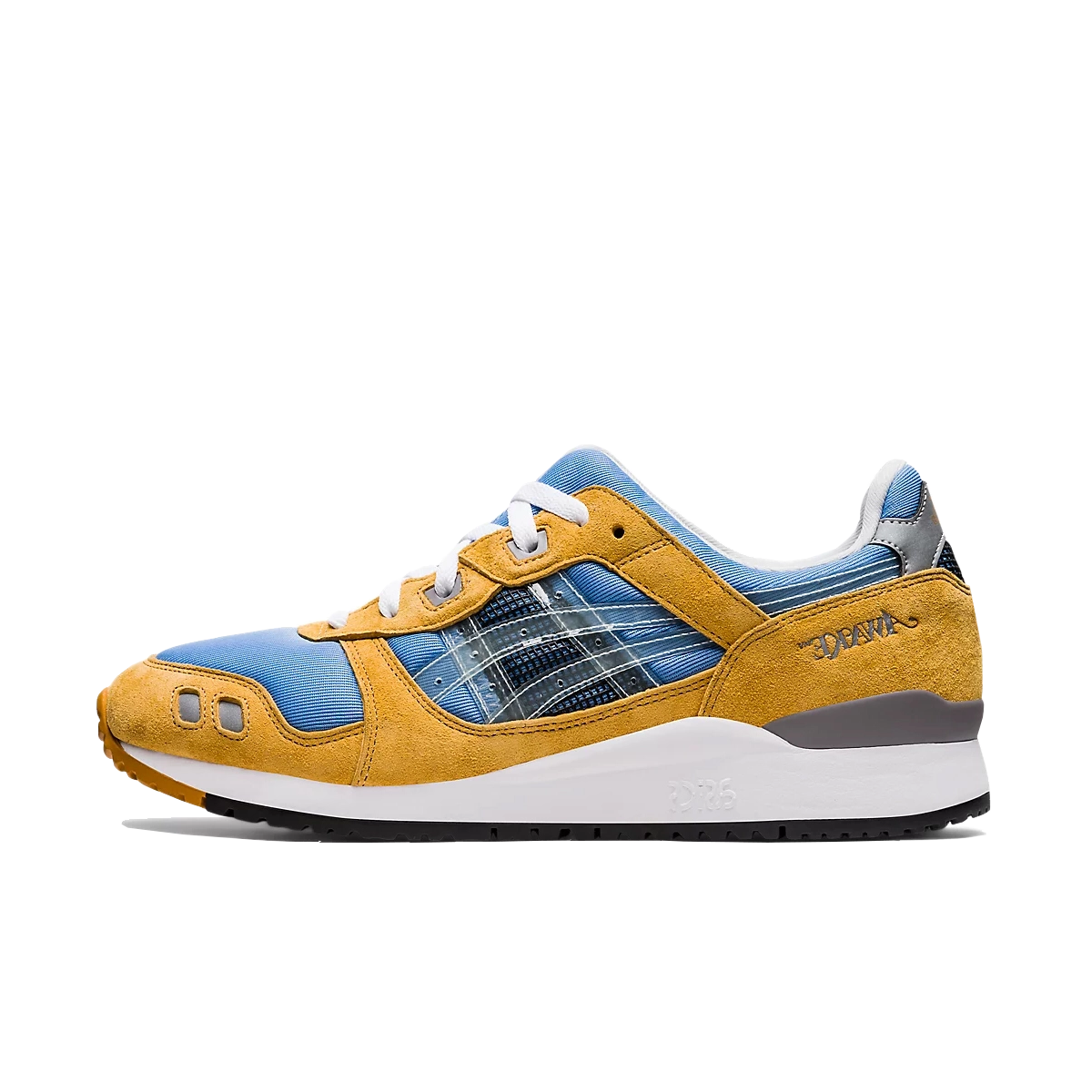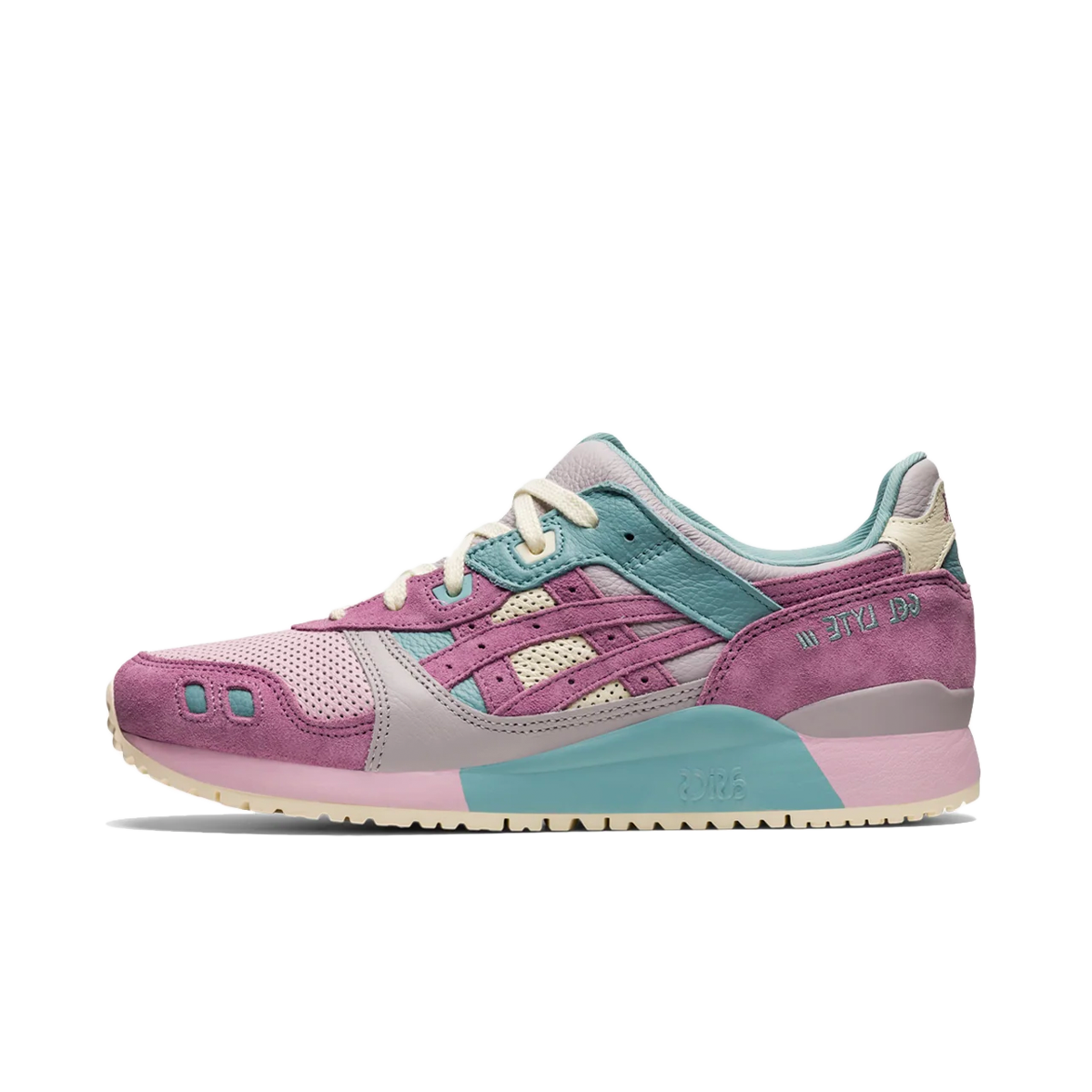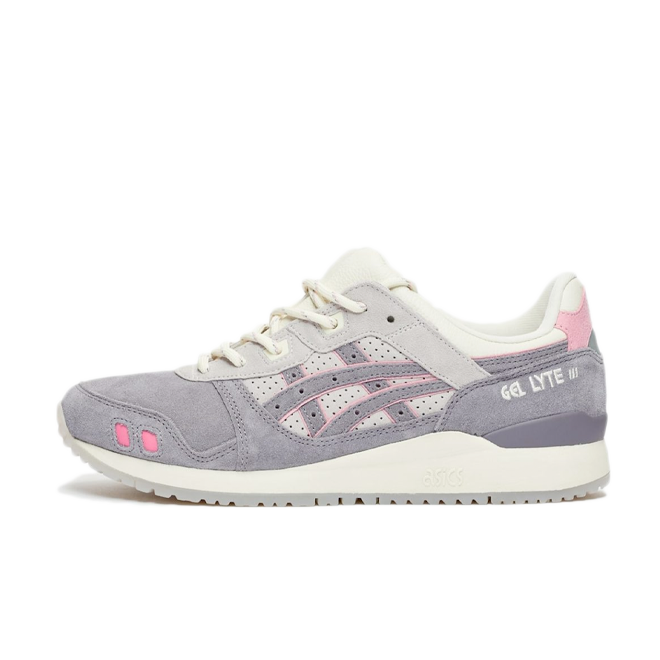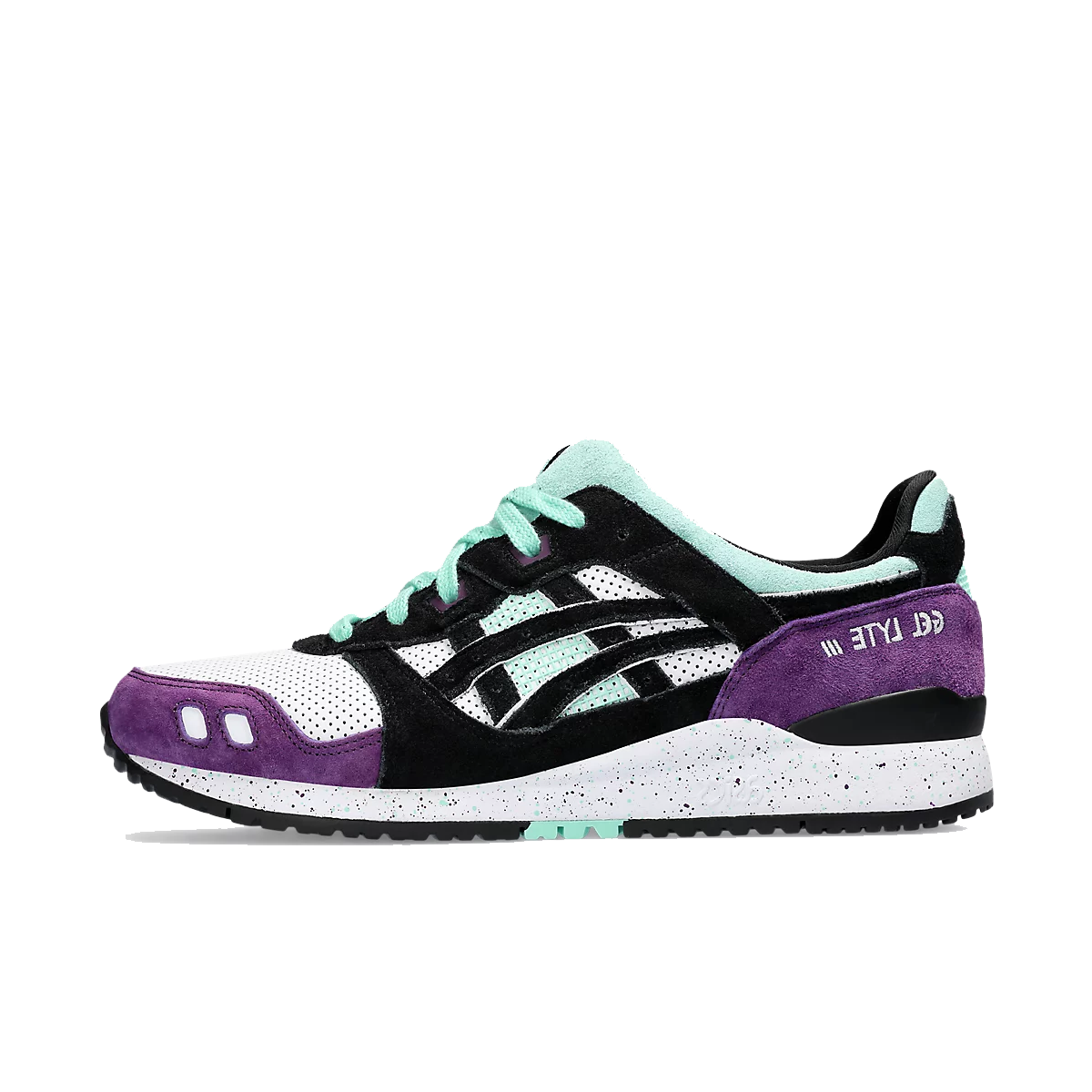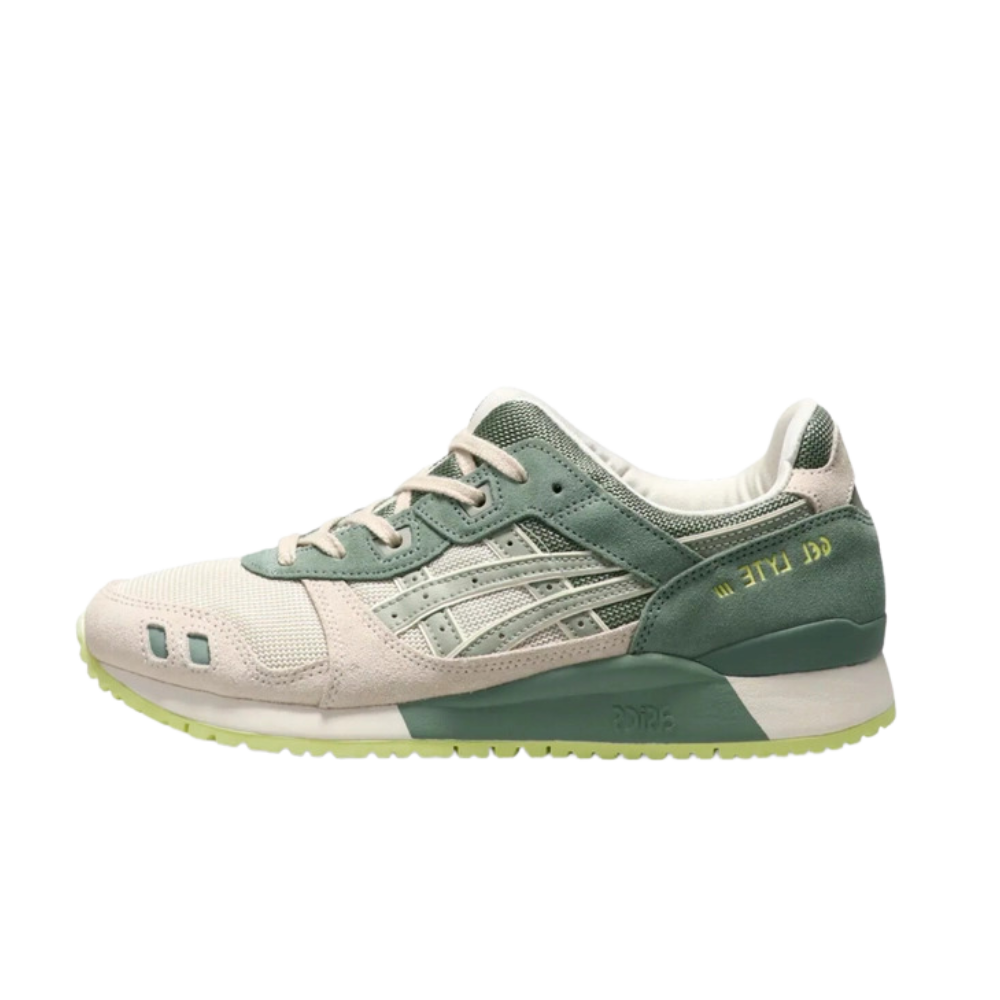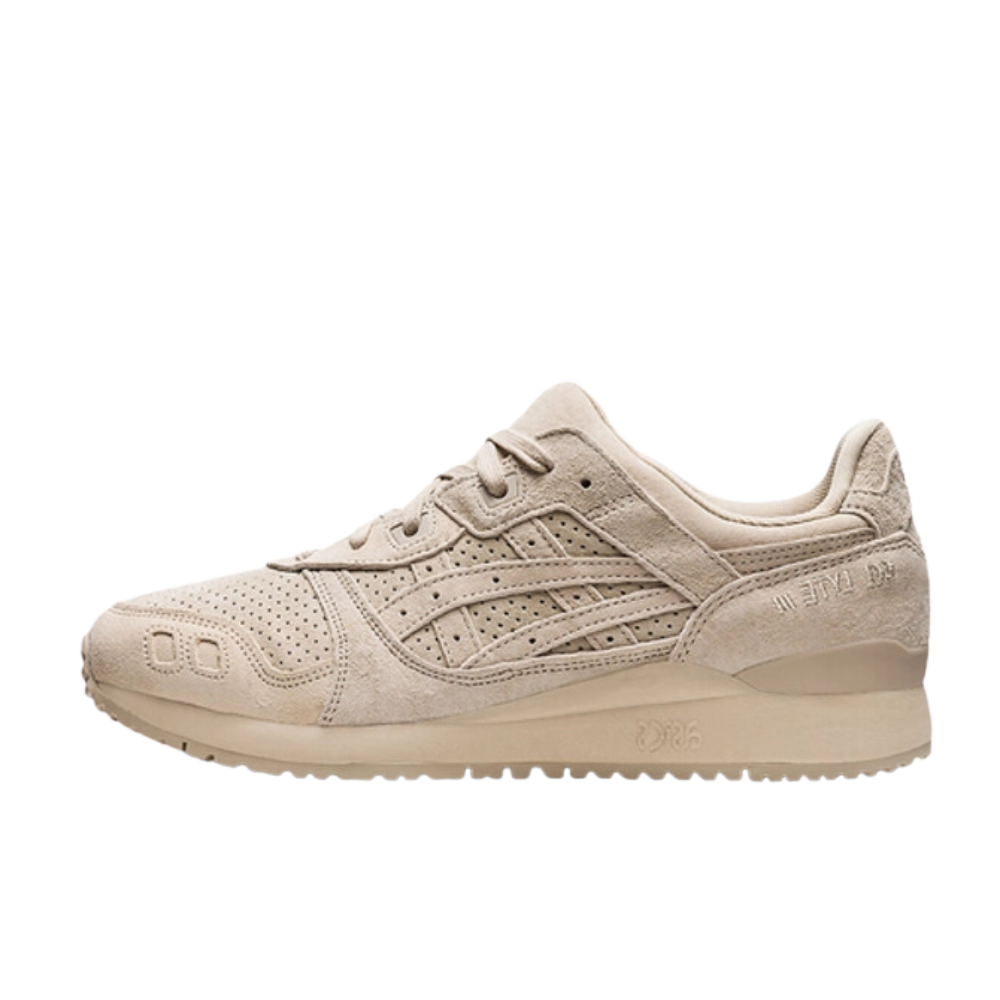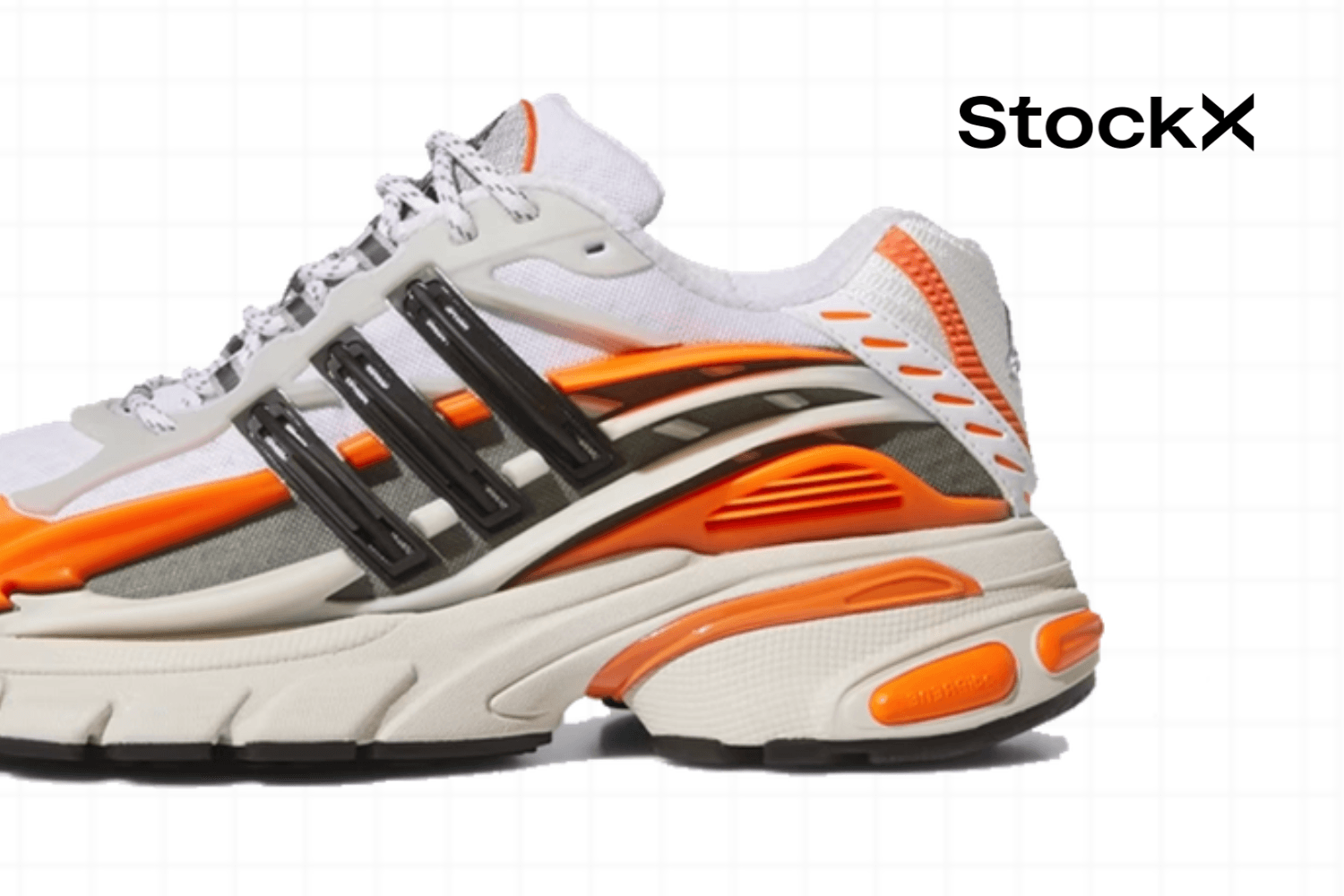The History of the ASICS Gel-Lyte III
In 1986, ASICS’ first GEL-based shoes, the GT-II and the FREAKS, were launched with their signature silicone cushioning materials placed in the midsole of the sneakers. This ‘GEL’ continued to evolve into one of the most fundamental and functional materials associated with ASICS today.

In 1991, the ultra-light successor to the GT-II was born. Designed by Shigeyuki Mitsui, the Gel-Lyte III debuted with a further developed sole system and more innovative tech, including a split tongue which was designed to eliminate tongue slippage while running, offering even better comfort and support.
The model was retired in the early 90s to pave the way for newer models like the GEL-LYTE IV and GEL-LYTE V, but in 2007, the model was re-released as a lifestyle sneaker in collaboration with Ronnie Fieg, a buyer at David Z in NYC who later became the founder of KITH.
The initial drops, and later colorways like the ‘Salmon Toe’, and ‘Leatherback’ saw the Gel-Lyte III explode back onto the sneaker scene, and since then it’s been picked up by several brands, artists, and sneaker stores for high-profile collaborations, including Slam Jam, Atmos, AFEW, Patta, Colette, Concepts, BAIT, Sean Wotherspoon and more.




The silhouette is now an urban must-have for sneaker addicts who are looking for a sneaker that offers comfort for all-day wear without sacrificing any style.
ASICS Gel-Lyte III: Answering Your Questions
Is the ASICS Gel-Lyte III comfortable?
The ASICS Gel-Lyte III has a padded collar and split tongue which gives a supportive fit, and GEL Cushioning in the heel and forefoot provides excellent shock absorption, so the model is super comfortable for all-day wear.
Is the ASICS Gel-Lyte III a running shoe?
Through the combination of GEL Cushioning Technology, a breathable and lightweight construction of mesh and synthetic materials, and thoughtful design elements like a split tongue to prevent slippage, the ASICS Gel-Lyte III is suitable for both everyday wear and light running. However, the model is more of a lifestyle shoe now, so for more serious running, consider the Gel-Cumulus or Gel-Nimbus.
Do ASICS Gel-Lyte III fit true to size?
In general, ASICS sneakers fit closely, including the Asics Gel-Lyte III which has a narrow toe cap. It is therefore recommended to take half a size up than your normal size.
How do I tie my Gel-Lyte III laces?
For guidance on tying your Gel-Lyte III laces, check out our Ultimate Sneakerjagers Lacing Guide!
What is so special about the ASICS Gel-Lyte III?
A successor to the GT-II, one of the first sneakers with ASICS' patented GEL cushioning, the ASICS Gel-Lyte III launched in 1991 with major further development of the sole system. Additional tech features were also added - for example the split tongue, that offers even better comfort and support.
Who has ASICS Gel-Lyte III collaborated with?
The ASICS Gel-Lyte III has already had a lot of collaborations to its name. Although the most famous is the partnership with Ronnie Fieg since its relaunch in 2007, there have also been well-received collabs with Atmos, AFEW, Patta, Concepts, Colette, BAIT, Sean Wotherspoon and Slam Jam to name just a few.
How can I clean my ASICS Gel-Lyte III?
A Gel-Lyte III is best cleaned by hand. For the best results, remove the laces, then use a toothbrush to remove obvious dirt from the surface. Mix a mild detergent with some water, and use a sponge or cloth to gently scrub harder stains, or for suede, use a suede brush (water can damage suede). Use a damp cloth to wipe off the residue, then let them air-dry.
For a smelly sneaker, you can sprinkle baking soda inside the shoe, then leave overnight. The powder will absorb moisture and neutralise the smell. Shake out the excess before wearing again. Alternatively, you can use silica gel or activated charcoal bags for the same results.
Laces can be cleaned with a mild detergent and rinsed afterwards, or you can put white laces in a 1:5 bleach and water solution for a few minutes and then rinse thoroughly with clean water.
In addition, we do not recommend putting your shoes in the washing machine. Sneakers made of leather and suede can come out damaged. With shoes made of canvas or cotton, the risk is less, but the chance of damaged sneakers remains. So we recommend always washing your sneakers by hand. If you do put them in the washing machine, then place the shoes in an old pillowcase beforehand.
Where can you buy ASICS Gel-Lyte III?
Do you have your eye on this model? With our sneaker search engine, you can browse the ASICS Gel-Lyte III at different retailers and at different prices. Our release calendar also keeps you up to date on Gel-Lyte III restocks and new releases!

Popular ASICS Gel-Lyte III Colorways
ASICS have released many successful colorways on the Gel-Lyte III, and these are some of the most popular and all-time favourites.

